This is a sponsored post written by me on behalf of U.S. Civil Rights Trail for IZEA. All opinions are 100% mine.
“It was the beginning of a flame that would go across America” Joe Azbell, Montgomery Advertiser Reporter
Joe Azbell was reporting on the gathering of nearly 5000 blacks in the Holt St Baptist Church in Montgomery to decide on what they’d do in regards to the arrest of Rosa Parks, a quiet courageous lady who decided she would not give up her seat on the bus to a white passenger, as was demanded of her.
Jo Ann Robinson, a professor and the Alabama college, quickly got the message into the hands of 55,000 blacks that now was the time for them to boycott the buses in protest against the segregation. She suggested the new enigmatic leader of her church: Dr. Martin Luther King Jr. to be the leader of the movement.
5000 people gathered in the Holt Street Baptist Church to enthusiastically and unanimously decide YES to the Montgomery Boycott and to hear King’s stirring speech advocating action without violence.
The boycott was meant to last for one day, but it turned into 13 months. The people rallied together to hello transport one another around the city to their places of work. It as an incredible achievement and eventually the won to have the segregation law removed by the US Supreme court.
It as incredible to move throughout the city to learn more about the story and how the march for equality continues today.
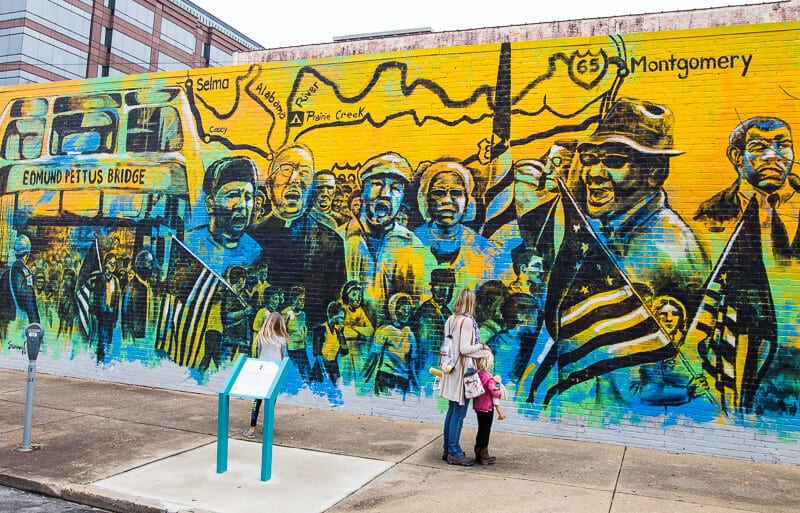
Montgomery Alabama is really the birthplace of Civil Rights. I would not have understood the significance of Montgomery in the US Civil Rights movement unless I visited Montgomery and spent time experiencing the stories and places that gave rise to the movement and created change.
I knew a lot already, having been a fan of Dr. Martin Luther King for many many years. I also used to teach about Civil Rights a little when I taught in North Carolina. I knew of Rosa Parks and the Montgomery bus boycott, but other than that many of the events, dates and names were just records in a text book.
Visiting Montgomery helped me to piece the significant events of the US Civil Rights movement all together and understand just how much was achieved on its buses, streets, homes and churches.
Montgomery Alabama is a significant stop on the U.S. Civil Rights Trail
1. Rosa Parks Museum

The Rosa Parks Museum is situated in the place where she was arrested on the bus in 1955. Before arriving to the museum stop a couple of blocks back at the fountain on Court Square so you can see where she boarded the bus.
I like the way the story of the bus boycott and Rosa Parks arrest was told within the museum. You begin with a video explaining what was happening at the time and why the bus segregation laws were the most humiliating for the black people in Montgomery.
You then walk into a room which shows a reenactment of her arrest, and then with gospel music playing, you walk through the doors of the Holt Church to learn more about hat happened after that – the 13 month long non-violent bus boycott and the beginning of the Civil Rights Movement.
There is also a children’s annex which has an interactive bus taking kids into the past and through the experience. We did not have time to do that.
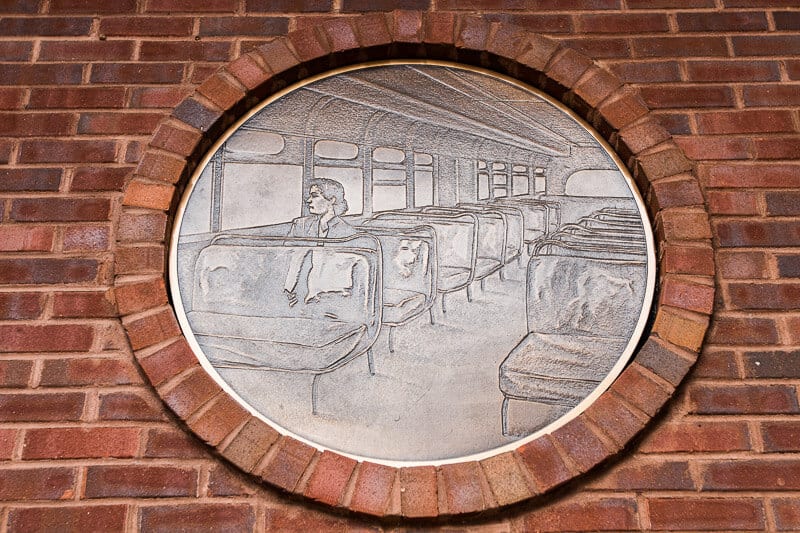
The Museum is very well put together and is not too overwhelming with information, you get a great sense of what happened and why and it is very relatable for children. Kalyra really understood what happened and was horrified when she saw the section on the bombing of Dr. King’s house.
Why would they do that?
While there is still so much work to be done, I’m so grateful she lives in a world where she naturally feels this is just so absurd.
Hours: Monday-Friday 9am-5pm; Saturday 9am-3pm
Admission Fee: $7.50 Adults; $5.50 Children 12 & under; $1
2. Dexter Avenue Baptist Church
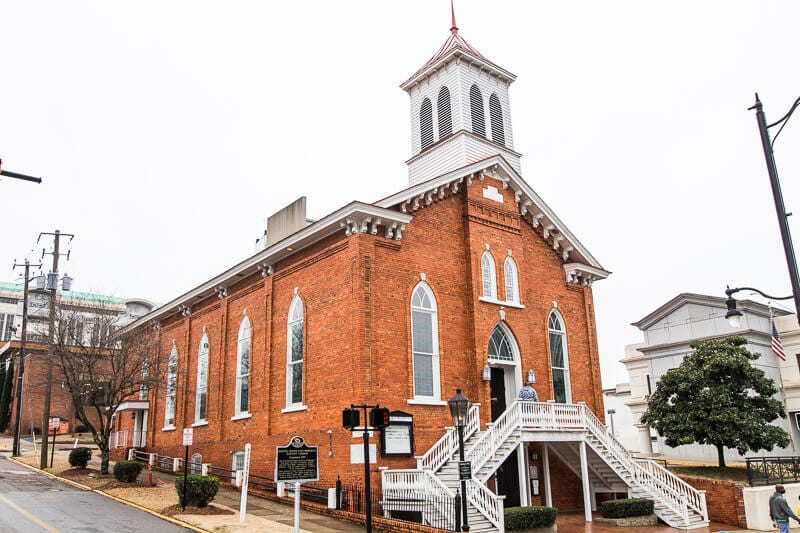
The Dexter Avenue Baptist Church was built in 1883 and quickly became an important worship and meeting place of the African community.
The old red brick building with views out to the State Capitol feels very symbolic when you consider what the community within this church was able to achieve in the city that was known to be the Cradle of the Confederacy, born from those Capitol steps the Church overlooks.
The Dexter Avenue Baptist Church is now known as the Dexter Avenue Memorial Baptist Church. It is a National Historic Landmark and is a World Heritage Site nominee because of its status as the birthplace of the Civil Rights Movement.
It is the only church were Martin Luther King Jr served as a senior pastor from 1954 to 1959 before he moved into a more national Civil Rights leadership role.
Our tour guide, Wanda, greeted us a warm hug when we arrived. She was full of love and joy and gave that to everyone present. If Dr. King had half of her enthusiasm, love and joy then I can see how they were able to move mountains in such peaceful ways.
It’s at the core of their spirit, and we were welcomed into that church like family, not just by Wanda but the other wonderful women working in the Church. They bestowed kisses on the girls foreheads and even cuddles and attention for their American Girl Dolls.
The tour starts in the basement of the Church, which is where the meeting to launch the Bus Boycott was held in 1955. A large mural on the wall of the basement depicts the struggles of the movement nd the landmark moments in King’s life from Montgomery to Memphis.

After a short video, we went into Dr. Martin Luther King’s office and the office of all of the church’s pastor and saw the office where we wrote many of his sermons and speeches. She gathered us around and has each of us introduce ourselves and share one thing we loved about ourselves.
As you can imagine, all of us had trouble doing this. She was so wonderful in encouraging us to love ourselves and spread that love and joy out into the world. The girls were too shy to share but we had them tell us that evening over dinner.
We stood behind the simple wooden pulpit where Rev. Martin Luther King, Jr. first preached his message of hope and brotherhood. It was where he stood after the long walk from Selma to Montgomery and said his famous words,
“How long? Not long!”
Wanda had us all stand behind to utter proclaim the same hopeful words.
Wanda had a captivating voice and sang to us many times, the most stirring in the second floor sanctuary, where King preached to his congregations. We gathered around and a tour member jumped on the piano and she sang “Let it Shine”.
We then stood in a circle together holding hands singing “We shall overcome,” to finish the tour. There were hugs and tears all around.
Wanda was overcome with emotion that we were there to help spread the message about the Civil Rights movement and help remind all of you that there is still work to be done and we can all continue the march by speaking love, peace and joy.
I’m so grateful and honored to have somehow landed in this place where I can do that. We want to do more than just share amazing travel destinations!
You can worship with the congregation on Sundays at 10:30. Id’ love to experience it. I can only imagine the love, hope and sense of community that lives within that church service.
Tours hourly from 10 a.m. – 3 p.m. except for noon.
3. Dexter Avenue Parsonage Museum
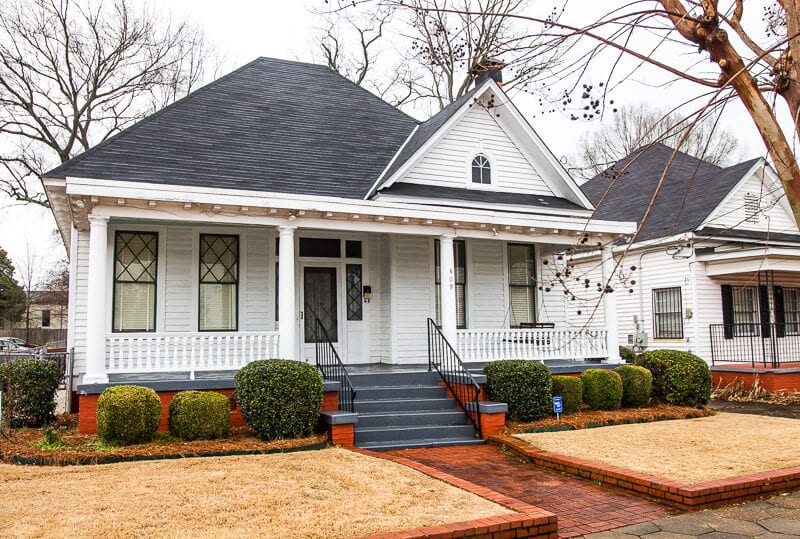
A few blocks from the Dexter Avenue Baptist Church is the the actual residence where Dr. King and his young gamily lived between 1954 and 1960. The Dexter Avenue Parsonage is a cute clapboard cottage in Centennial Hill, which was once a vibrant middle-class African suburb.
After laying dormant for ten years, it was recognized for its value to the legacy of the Civil Rights and Montgomery’s rich history and was restored to its appearance when Dr. King lived there.
Tours of the Dexter Avenue Parsonage Museum begin next door in the interpretative Center where you can see videos and photos of King and various congregation members. These are photos nave been released to the public before. You can only see them here. Our tour guide, 88 year old Mrs. Marguerite Foley, was a retired school teacher and member of Dexter Avenue Baptist Church when King was a pastor.
She took us on a tour through the different rooms of the house: the bedrooms, living room, parlor room, dinging room, office and kitchen. Much of the furniture in the house was actually used by the King family.
Many meetings were held here in regards to the US Civil Rights Movement, but there were also many church social gatherings as well. The Parsonage was bombed one day when Mrs. King and baby, Yolanda, were in the house, but thankfully no one was injured.
You can see the crater still in the front porch. An angry crowd gathered outside, and Dr. King calmly spoke to them to remember the non-violent movement and to go home quietly and drop their desire for revenge.
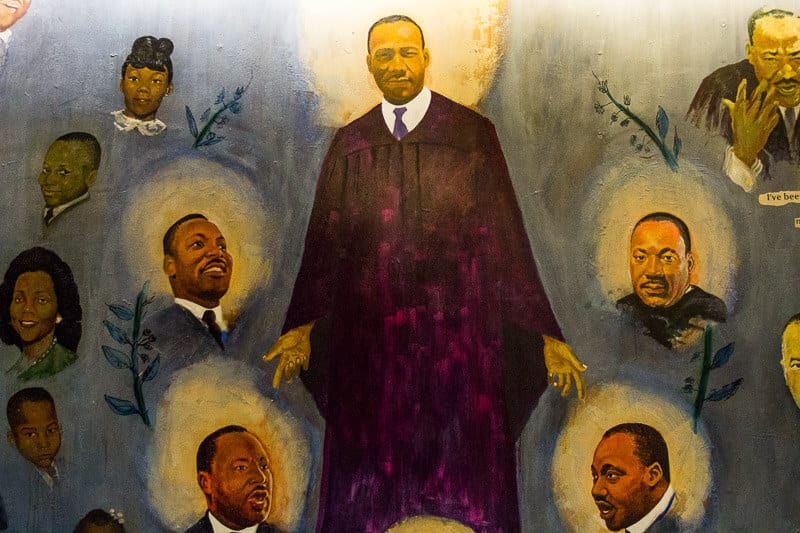
There is a small garden at the back of the house. The King-Johns Garden for Reflection. Due to wet weather we didn’t get to experience it. But In the serenity of this garden, you are invited to reflect upon six timeless themes about which Rev. Johns and Dr. King often preached, lectured, and wrote:
Equality, Forgiveness, Hope, Peace, Understanding, Unity
We ended the tour in the small kitchen, which was pivotal in the direction of the Civil Rights Movement. It was here in a moment of vulnerability and fear, Dr. King contemplated quitting as the Civil Rights Leader. He had received yet another death threat and he worried about the harm that possibly lay waiting for his wife and child.
Marguerite played part of one of his speeches he gave in Chicago describing the event. A few sobs were heard in the room as he spoke of his torture at midnight in that small kitchen and how he heard a strong voice within commanding him to stand up for justice, righteousness and truth and to do what is right. It renewed his faith and courage and he continued to lead the non-violent movement.
Kalyra asked me why the lady was crying, and I said,
“Who knows what kind of pain she has experienced due to the state of inequality and injustice in the world. She was probably crying tears of pain and tears of gratitude that this great great man did not falter and continued to work tirelessly for his dream that one day all people will judged, not by their color (religion or life choices) but by the content of their character.
Tours of the Dexter Avenue Parsonage Museum
Tuesday thru Friday: 10- 3pm, every hour, excluding noon to 1pm
Saturday: 10 – 1pm every hour.
4. The Freedom Rider Museum

The Freedom Riders were a group of blacks and whites who decided to peacefully ride the buses together from Washington DC to New Orleans in protest against the segregation that was happening on interstate bus rides.
Despite the city buses in Montgomery eliminating segregation, thanks to Rosa Parks and the Montgomery buys boycott, they had failed to follow the laws that said segregation was no longer allowed.
The buses with the CORE were attacked by mobs in Anniston and Birmingham. The police escorts mysteriously disappeared. A bus was set afire with terrified passengers inside; the mob holding the doors so they could not escape. They heard a pop and fearing the fuel tank bursting they ran and so the people were able to escape.
The National Guards were sent down to protect the riders an they were flown to NOLA instead of continuing the journey on the bus.
A group of students from Nashville who were inspired by various leaders with the Black community decided the peaceful movement for equality on the bus had to be finished so they rode buses from Nashville, intending to reach New Orleans.
Freedom Riders, black and white, male and female, none of them older than 22, stepped off a bus at the Montgomery Greyhound Station on May 20, 1961. They were prepared to meet mob violence with non-violence and courage. They prepared farewell letters and wills. Their goal was to help end racial segregation in public transportation. They were attacked once they reached the Greyhound bus station in Montgomery and then only made it as far as Jackson before they were arrested and sent to prison for 40 days for breaking segregation laws.

The Freedom Rides Museum is only 6 years old and the story is told through a series of art works, displays and biographies of key leaders and players within the movement. It’s in the site of the original Greyhound bus station and is the site of the attack on the freedom Riders.
This rehabilitated bus station has been restored to how it looked in 1961 and is the site of the attack on Freedom Riders when they arrived at the station You can also see the old colored only doorway that had been uncovered when the museum was built.
Once the laws changed it was quickly covered over with bricks. You get a sense of what it must have been like as a black person to walk through a door that ran along the buses outside to walk all the way out the back to the small, poorly maintained black section which was often locked.
Despite paying the same ticket prices, white people however had a lovely open spacious areas with well maintained facilities and always heated or cooled and never locked.
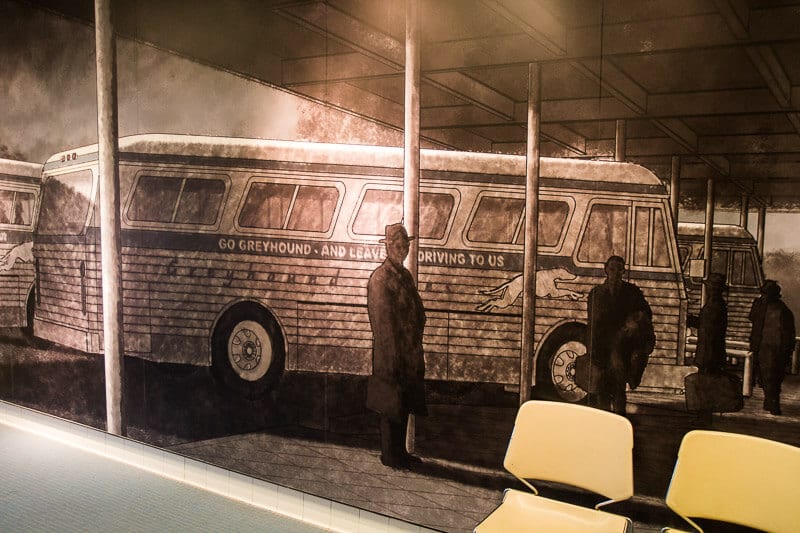
Freedom Riders often come to visit the museum to speak to various groups on different aspects of the movement and the strategy behind creating peaceful change. It’s something I’d love to attend one day.
Our guide, Dorothy, was extremely passionate about the museum. Her stories helped us understand more of what happened during this period of the Civil Rights Movement. I thoroughly enjoyed her tour of the museum. They also have a scavenger hunt for the kids to help them better understand the museum.
Open Tues – Sat. Noon to 3pm
Tickets: $5 adults, $3 children 6-18 years
5. Civil Rights Memorial Center
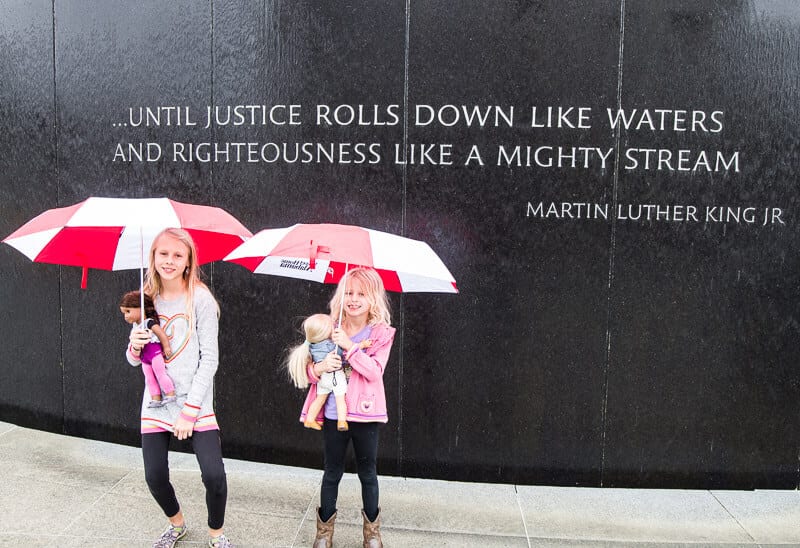
After you have finished visiting the US Civil Rights Trail attractions in Montgomery end at the Civil Rights Memorial Center. It’s a place to reflect on all you’ve learned about the struggle for equality. It’s a space to honor the martyrs of the movement and all those who sacrificed so all men and women would be considered equal.
There is a beautiful memorial out the front, designed by Maya Lin, the same designer of Washington’s Vietnam memorial. A circular black granite table records the names of the martyrs and chronicles the history of the movement in lines that radiate like the hands of a clock. Water flows out the center and across the top of the etched names.
On a curved black granite wall behind the table is engraved Dr. Martin Luther King Jr.’s well-known paraphrase of Amos 5:24 –
We will not be satisfied until justice rolls down like waters and righteousness like a mighty stream.
It’s a place to reflect and consider how injustices continue today and what you can do to help correct it.
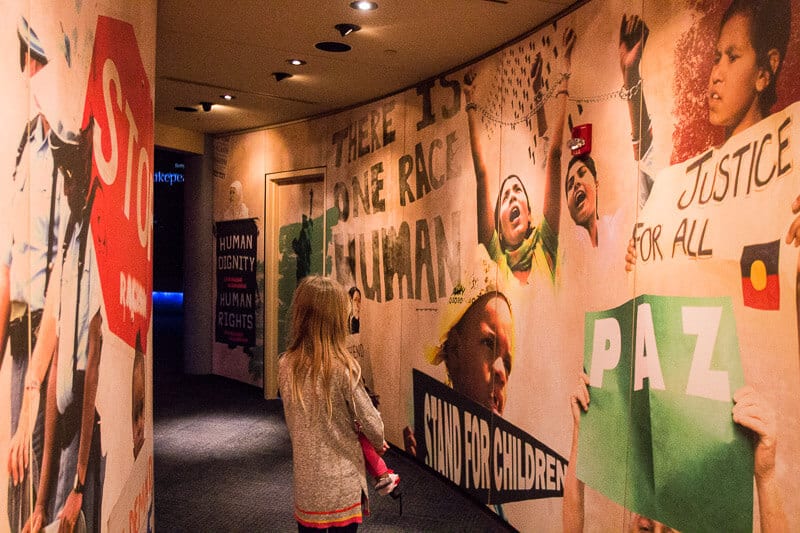
I encourage you to go inside the memorial center to learn more about the stories of the martyrs, to contemplate the journey to come, and to visit the Wall of Tolerance where you can take the pledge to stand for justice, peace and love.
Add your name to the wall.
By placing my name on the Wall of Tolerance, I pledge to take a stand against hate, injustice and intolerance. I will work in my daily life for justice, equality and human rights – the ideals for which the Civil Rights martyrs died.
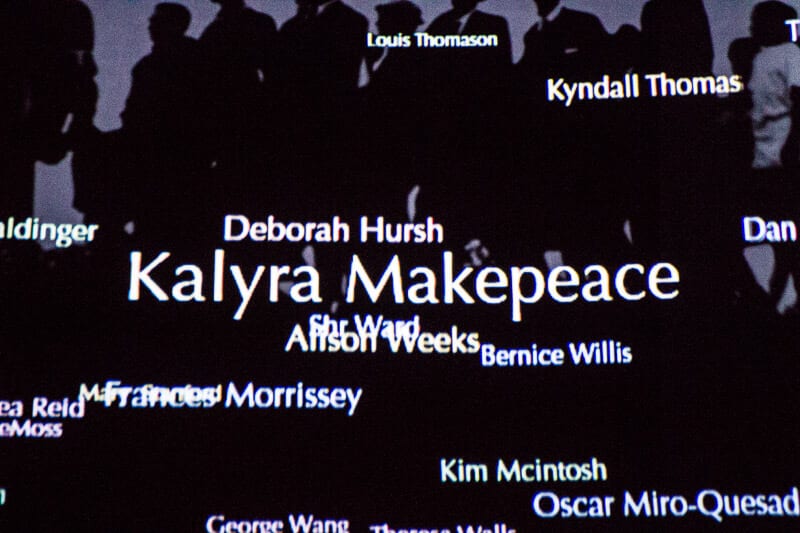
The Memorial is just around the corner from the Dexter Avenue Baptist Church
I’ve always had the belief that not having equality for any reason let alone the color of your skin is total madness; it may be one reason I’m drawn to follow the Civil Rights Trail with my girls. I want them to see first hand how the world they live in was created due to the sacrifices of so many brave men and women who passionately believed in something and peacefully fought for it.
I want them to see that “What happened here changed the world.”;and how great change can come from peace, and that the world still needs a lot of freedom fighters bringing about peace and equality for all.
Thanks to the US Civil Rights Movement so much change has occurred, yet there is still so much more to be done.
I am inspired by the stories of those who walked from Selma to Montgomery, for those who boycotted buses, those who traveled on interstate buses to protest segregation and were beaten by mobs for doing so, who were tortured in prisons and sit ins, and yet through all of this remained stoic in non-violent protest and did not allow bitterness and anger into their hearts.
I take the courage and sacrifices of their stories and their souls into mine and just hope I can use a little of that each day to be better.
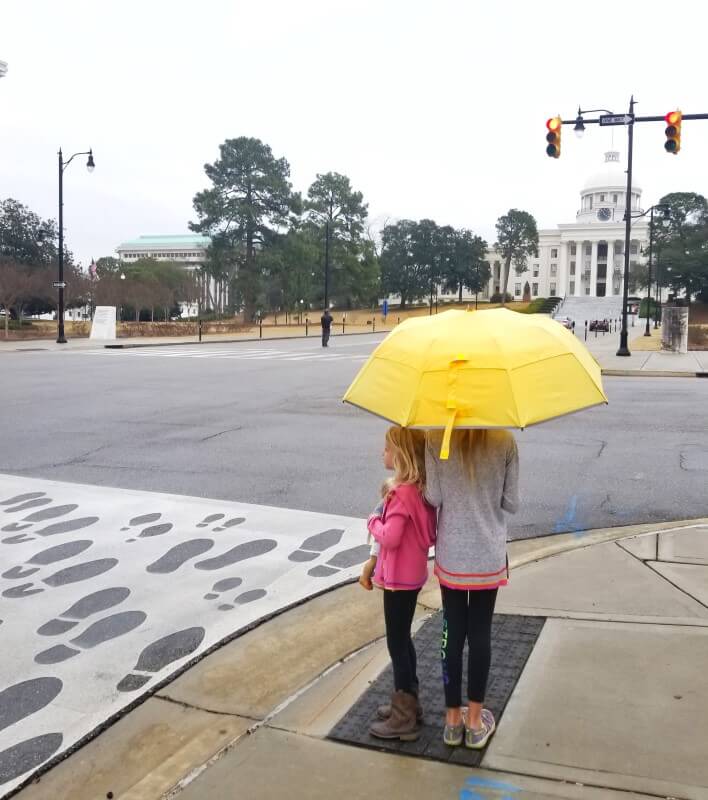
You too can walk in the footsteps of these heroic foot soldiers and learn what life was like for those as they overcame adversity, made history, and created a better world for all.
The US Civil Rights Trail was established in 2018; and is a collection of over 100 attractions across 14 states;including 100 churches, courthouses, schools, museums, and other landmarks in the Southern states and beyond that played a pivotal role in advancing social justice in the 1950s and 1960’s.
The US Civil Rights Trail makes it easy for you to plan your travels around the the Civil Rights attractions. I highly recommend it. I feel so much connected to the story now and it’s power and plan to continue to incorporate Civil Rights attractions into our travels. It’s travel that nourishes you and your children’s’ soul and reminds you that we are not alone nor here for us alone.
Stand for love, peace and equality for all.
Civil Rights Trail is included in our best USA road trip ideas list!
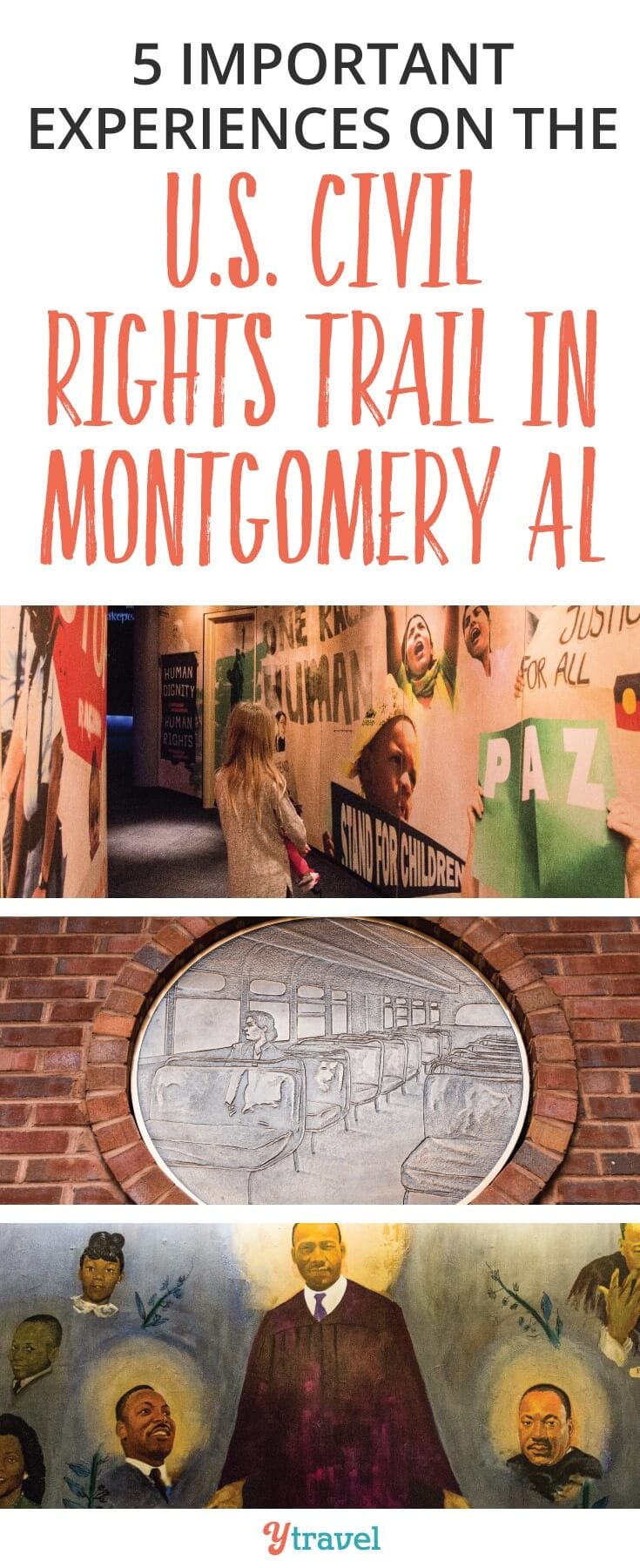

You find the most amazing things to visit in seemingly unappealing sounding towns. I am hoping my next road trip in the US is through this southern part of the country so I am always excited when I see another blog arrive to help plot my course. Keep it up, I’m loving it. Cheers.